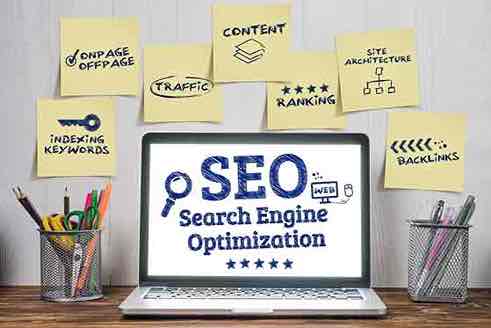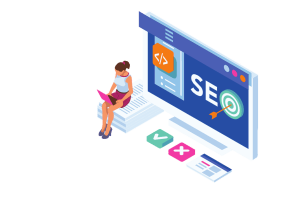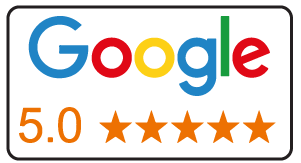Digital Marketing Company Johannesburg
In our modern era, the success of companies is underpinned by a very strong online presence provided by a digital marketing company in Johannesburg. With the existence of artificial intelligence and other developments, digital marketing has evolved in a very conspicuous way. The benefits are tremendous in advancing the companies’ objectives. Therefore, it is advantageous for organizations to famaliarize themselves with these marketing developments and include them in their strategies or get a digital marketing agency to assist. Different industries employ different marketing techniques designed for their different target market.
What is a Digital Marketing Strategy?

A digital marketing strategy is a set of actions that takes place online to achieve business objectives. These actions can be run by an in-house team of the company or third-party organization called an agency. This type of marketing strategy involves different online marketing techniques that maximize the reach to the targeted audience. It is not limited to only one approach or channel, but a plenty of channels, for example, social media, organic searches, referrals, etc. These are measured by analytics tools to determine which one is more effective, and which ones can be improved.
Elements of Digital Marketing Company Johannesburg
Let’s explore different kinds of digital marketing techniques
Advertising: This part deals with adverts placements to third-party websites. It comes in different forms such as Digital images, text, pop-ups, banners, and videos.
Content Marketing: This component involves as lot of research to publish high-quality, pleasing to audience more frequently.
Email Marketing: It Is driven by creating and collecting email details of potential clients. Once a database is created, email distribution tools can be used to send out bulk emails for promotional adverts.
Mobile Marketing: This component involves placement of advertisements on mobiles through downloaded apps.
Paid Search: This is called Pay Per Click, for example, Google Adwords, etc. It involves investigating keywords with traffic and create a sponsored advertisement around it. The adverts get placed above organic search results on search engines. For this technique to be effective, you need to allocate optimal budget to get return on investment.
Search Engine Optimization (SEO): The technique involves on-page and off-page optimization. On-Page optimization deals with making a website seo friendly in terms of website load speed, mobile friendliness, etc. This optimization happens after keywords and competitor analysis have been investigated. Off-page optimization deals with creating a backlinks profile through placing the website on third-party websites.
Social Media Marketing: It is made up of organic posts and sponsored adverts on social media. Sponsored adverts are Pay Per Clicks adverts and work like Google Adwords. Organic posts refer to the content that gets posted on social media pages, personal account and groups.
The benefits of digital marketing are abundant, including increased brand recognition, better customer engagement, higher website traffic, and elevated conversion rates. In this digital age, the advantages of digital marketing are hard to ignore, and businesses that adopt this strategy are more likely to be ahead of their competitors.
Factors to consider for digital marketing:
1. Understanding Your Target Audience With Research (A/B Testing)
Before diving into digital marketing, you must clearly identify and understand your target audience. Create detailed buyer personas to better grasp your audience’s demographics, behaviors, and pain points. It is about creating an audience profile, their living standards measure (LSM). This knowledge will guide your digital marketing strategies and ensure your efforts are well-targeted. Developing accurate buyer personas allows you to tailor your content and messaging to resonate with your audience’s specific needs and desires.
For instance, if you are marketing luxury fashion items, your content and branding should align with the tastes and aspirations of high-end consumers i.e. High LSM, while selling budget-friendly products would require an entirely different approach. By putting yourself in your customer’s shoes and understanding their pain points, you can create content and marketing campaigns that genuinely address their needs and increase engagement and conversions.
To employ effective digital marketing strategies, it is highly recommended to research what is effective and not. Trial and Error methodologies like A/B testing into mind. A/B testing, or split testing, involves comparing two versions of an ad or webpage to determine which performs better.
For example, if you are running a social media campaign, A/B testing can involve creating two different ad copies, one focusing on highlighting discounts and the other emphasizing product features. You can identify which version resonates more with your audience by monitoring metrics from analytics tools such as click-through rates and conversion rates. Adopting this data-driven approach allows you to optimize your digital ads for better performance based on user preferences. A/B testing provides actionable insights and allows you to make informed decisions that align with your target audience’s preferences, ultimately leading to more effective and efficient digital advertising campaigns.
Incorporating A/B testing into your digital advertising strategy is a simple process for beginners. You can begin by selecting a specific element you want to test, such as ad headlines, images, or calls-to-action (CTA). Next, create two variations of the same ad, with the only difference being the element you have chosen to test. Ensure that both versions are randomly distributed to your target audience. Monitor key performance indicators (KPIs) closely, comparing the results of each variation. This iterative process of experimentation allows you to understand what resonates with your audience and refine your digital advertising efforts accordingly.
By embracing A/B testing, beginners can gradually refine their strategies, ensuring that they reach their target audience and deliver content that truly resonates with them.
2. Develop A Strong Online Presence With First impression
An effective landing page on your website is very important to growing your online presence. The website should load faster, easy to navigate and be mobile friendly. Also, it should reflect your corporate identity so that users can easily recognize your brand. The idea is to enable users to find what they want on your website much easier. A great tip would be to use attention-grabbing headlines and visuals that resonate with your target audience.
Also, we need to enable users to take the right action on the website. We do that by adding call-to-action (CTA) buttons, for example, “Get A Quote”, etc. This is good for generating leads and creating a pleasant experience for users.
A strong online presence can also be enhanced on social media. Research should be conducted on which social media platforms to use based on where your audience is. You need to be intentional and consistent with posting frequently. This creates trust from your users and strengthens the brand. part from your website,maintaining an active presence on every relevant social media platform is crucial in building a strong online presence. Updating social media profiles regularly helps build connections with audiences and showcase expertise.
3. Content Marketing Is Very Important
Content plays a great role in giving your domain authority. So, creating high-quality content should be at the forefront of your digital marketing strategy.
Domain authority is a measure of how search engines see your brand. So, if you produce high quality content that is informative and engaging, search engines reward you by ranking your website highly.
Start by researching your audience’s pain points, needs, and interests. What questions are they asking? What problems can your product or service solve? Tailor your content to answer these questions, offer solutions, and provide valuable insights. Whether blog posts, videos, infographics, or podcasts, your content should aim to educate, entertain, and inspire your audience so that you may generate leads and increase the company’s profitability.
Moreover, consistency is key in content creation. Establish a content calendar to ensure a regular flow of posts and updates. This consistency keeps your audience engaged and signals to search engines that your website is active and relevant. Remember that content quality goes hand in hand with relevance, so keep your content updated and align it with your evolving business goals. Moreover, the content should be accompanied by high resolutions graphics, images, videos, etc. as graphics convey much information than text.
4. Attract Clientele With Search Engine Optimization (SEO)

Search Engine Optimization (SEO) is cheaper than Pay Per Clicks adverts. The whole idea is to rank higher in search engine results pages (SERPs) to increase chances of attracting more traffic. This is referred as organic online presence.
To get started with SEO, you must perform thorough keyword research to identify the terms and phrases your potential customers use to search for products or services like yours. These keywords will be the building blocks of your SEO strategy, guiding the optimization of your website content, meta tags, and more. Implementing on-page and off-page SEO techniques, such as creating quality backlinks and improving site speed, boosts your website’s visibility and drives organic traffic.
SEO is a long term technique and ongoing process. Google Analytics assists in measuring the success of digital marketing strategy as it provides important metrics. With time and dedication, SEO can become a foundational pillar of your digital marketing strategy, driving consistent, long-term results for your business.
5. Social Media Marketing
With billions of users across various platforms, including Facebook, Instagram, Twitter, LinkedIn, and TikTok, social media offers a vast audience you can tap into. Choose the social media platforms that best suits your target audience and industry. Once established, maintain an active presence by regularly sharing engaging content, including social media posts, images, videos, and stories. Respond promptly to comments, messages, and interactions to foster a sense of trust among your followers. You can build lasting relationships and enhance brand loyalty by humanizing your brand and showing genuine interest in your audience.
In addition to organic engagement, social media advertising can significantly boost your online visibility. Platforms like Facebook Ads, Linkedin Ads, etc. provide powerful targeting options, allowing you to reach your ideal customers based on demographics, interests, and behaviours. Consider running paid advertising campaigns to expand your reach and drive specific actions, such as website visits, app installations, or product purchases. Sponsored Adverts are the most effective social media marketing tool.
Through organic and paid social media strategies, you can connect with your audience, showcase your products or services, and create an influential online presence that stands out in the crowded digital landscape.
Off-page optimization deals with increasing the domain rating of the website. This is done by placing your website on third party websites i.e. backlinks with high domain authority.
6. Email Marketing
Email marketing remains a highly cost-effective way to nurture leads and maintain relationships with your existing customers. It lets you connect with your audience more personally, nurturing leads and retaining loyal customers. The first step is to build an email database, and you can do this by offering incentives such as ebooks, discounts, or newsletters in exchange for visitors’ email addresses. Once you have a list, segment it to send tailored messages to different groups of subscribers based on their interests and behaviours.
Creating compelling email content is essential to engaging your audience and encouraging them to take action. Craft subject lines that grab attention and content that provides real value. Whether promoting products, sharing industry insights, or delivering exclusive offers, your emails should be relevant and engaging. Additionally, use email marketing automation tools to schedule emails and track open rates, click-through rates, and conversion rates. This data will help you refine your email marketing strategy over time, making it more effective and efficient in reaching your goals.
7. Pay-Per-Click (PPC) Advertising
Pay-per-click (PPC) advertising is a paid digital marketing method that puts your ads right at the top of search results or on websites and social media. Platforms like Google Ads and Facebook Ads are the most well-known for running PPC campaigns. The beauty of PPC lies in its precision and cost-effectiveness, as you have complete control over your budget and can target specific demographics, keywords, and locations. Careful keyword research, compelling ad copy, and continuous monitoring are essential for success. By analyzing performance metrics and adjusting your campaigns over time, you can optimize your return on investment (ROI) and generate a steady stream of potential customers. This falls under campaigns management
In PPC advertising, you only pay when someone clicks on your ad, making it a relatively cost-effective way to reach your target audience. But remember that competition can drive up costs, and poorly managed campaigns can drain your budget quickly. Testing and refining your ad creatives, landing pages, and targeting parameters is crucial to maximize your ROI. Whether promoting a product, service, or a specific landing page, PPC advertising can be a powerful tool in your digital marketing arsenal when wielded correctly.
8. Analyze Data Dashboards And Adjust Your Strategies
To continually improve your digital marketing efforts, it’s important to measure and analyze your results. Platforms like Google Analytics and Facebook Ads Manager provide user-friendly interfaces that break down key metrics, allowing you to gauge the effectiveness of your campaigns and organic marketing. These dashboards assist in best understanding your audience demographics, engagement rates, and conversion data. By regularly assessing this information, you can identify trends and areas for improvement, and refine strategies for better outcomes.
Understanding price points is another critical aspect for those venturing into digital advertising. Analyzing the cost per click (CPC), cost per mille (CPM), or cost per acquisition (CPA) helps optimize budget allocation and ensure efficient use of resources. You should experiment with different budgets and monitor performance to find the sweet spot that aligns with your goals.
9. On-Page Optimization
Mobile responsiveness play a major role in on-page optimization. In an era where smartphones and tablets have become integral parts of our daily lives, mobile optimization is a non-negotiable aspect of any flourishing digital marketing strategy. Ensuring that your website and content are mobile-friendly creates a pleasant experience for your users.
Mobile optimization goes beyond responsive design, extending to your website’s performance and load times. With mobile users often having limited bandwidth and processing power compared to desktop users, optimizing your site for quick loading and smooth functionality on mobile devices is vital. Slow-loading pages can frustrate visitors and increase bounce rates, harming your digital marketing efforts. Therefore, compress images, minimize unnecessary scripts, and optimize the overall code to ensure your website loads swiftly on mobile devices. This enhances the user experience and contributes to your site’s overall SEO health, as search engines consider page speed as a ranking factor.
Mobile optimization is necessary for any digital marketing campaign, ensuring that you provide a user-friendly, efficient, and accessible experience to the ever-growing mobile audience.
To Sum Up:
Ultimately, the essence of successful digital marketing lies in understanding your audience, providing value, and fostering authentic connections. You can craft a robust, results-oriented digital marketing strategy by leveraging tools like SEO, Yoast, Site Kit, Social Media, Quality Content, etc. Keep testing, optimizing, and innovating to reach your digital marketing goals. You can succeed in this dynamic industry with hard work, consistency, and a willingness to adapt.
EXCELLENTTrustindex verifies that the original source of the review is Google. Best in town. Dedicated and vast experienced team.Posted onTrustindex verifies that the original source of the review is Google. Really great service, quality and professional team!Posted onTrustindex verifies that the original source of the review is Google. Great work as alwaysVerified by TrustindexTrustindex verified badge is the Universal Symbol of Trust. Only the greatest companies can get the verified badge who has a review score above 4.5, based on customer reviews over the past 12 months. Read more





